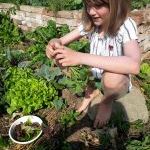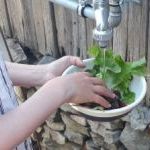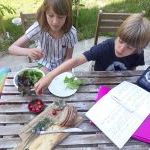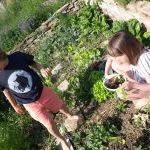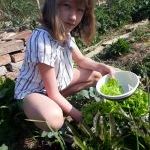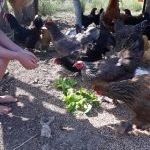There we have the salad
The annual program "There we have the salad" starts in the autumn with a visit to a local market or grocery store. Children discover the variety of salad produce and the most tempting ones are chosen and purchased. Back at the kindergarten, the salads are explored, prepared and tasted. During the year, children are engaged with salad again and again and ask questions such as what´s does it taste like, how is it grown and when can we harvest it? At the end of the kindergarten year, after eight seasonal modules, children are familiar with the local variety of salad and have learnt how to cultivate and prepare it.
Website
Country
Media
Photograph by K. Kaiblinger
Useful links:
Salad growing tips from the RHS Campaign for School Gardening
You can grow salad in a window box:
*TOP TIP*
Grow salad at your school. There is no need for a lot of space. The salad can also be grown in small pots or small crates.
How is the project linked to climate change & sustainability?
Children experience the farming cycle of sowing, growing and harvesting through salad. The practical involvement with salad, its cultivation, care, harvesting and preparation enable the children to learn about the varieties of salad as a foodstuff; to leran more about food and farming and to understand the benefits of local food.
Who is involved?
Parents alongside kindergarten teachers run the project for the children. Resources and the training of kindergarten teachers are overseen by the University college of agricultural and environmental education and Gutessen Consulting.
How are the participants involved?
The children are involved in every step of the year long project. They are involved in visiting the regional markets in Autumn, growing on a small scale indoor and outdoor, cultivation, plant care, harvesting, and finally, preparing and tasting the salads for lunch. The project ends with a summer salad party, where parents, grandparents and friends are invited and where the children pass on their knowledge and experiences.
Key steps
- Decision that the project will be the educational focus of the Kindergarten-year.
- Train and involve all teachers in the planning.
- Prepare and plan the schedule of activities for the year – Do we have outdoor space for gardening (even very small scale)? Which materials do we need?
- Start with the Autumn activities - Get to know the different types of salads and learn about salad growing indoors and outdoors.
- Move onto the Winter activities - Get to know and taste winter salads and explore the garden in Winter.
- Move onto the Spring activities - Researching and lanting the early greens and herbs.
- Time for the Summer activities - Maximise this prime growing season and care for your own salad plants.
- Finally, harvest your salad and organise your salad party.
“Many children would never gain their own experience of growing vegetables without gardening together in the kindergarten.” Kindergarten Ghegagasse, Graz
"How is food produced? Fewer and fewer children are lucky enough to experience this in their own vegetable garden or on the farm. During a kindergarten year, lettuce can be used to experience the annual cycle of sowing, planting, growth and harvest, but also blossoming and seed ripening."
Irene Treitner, University of Applied Sciences for Agricultural and Environmental Education

